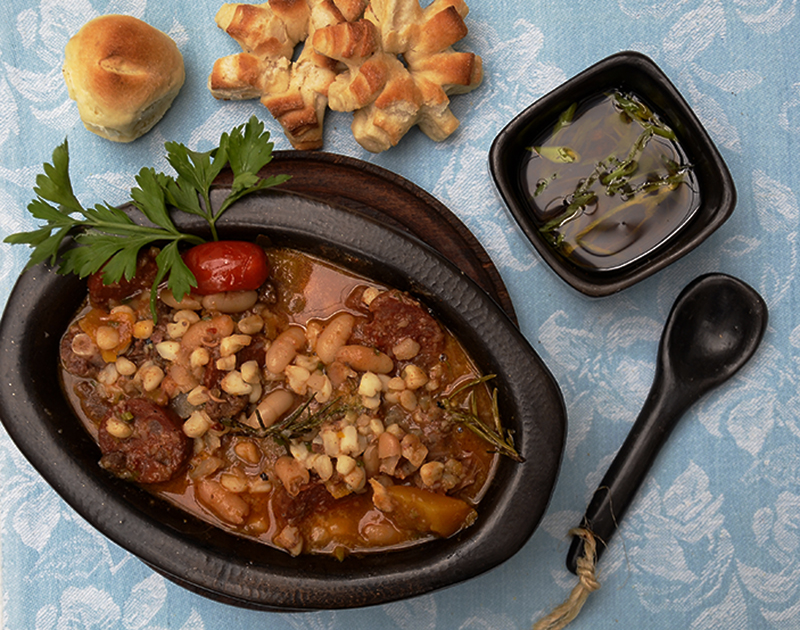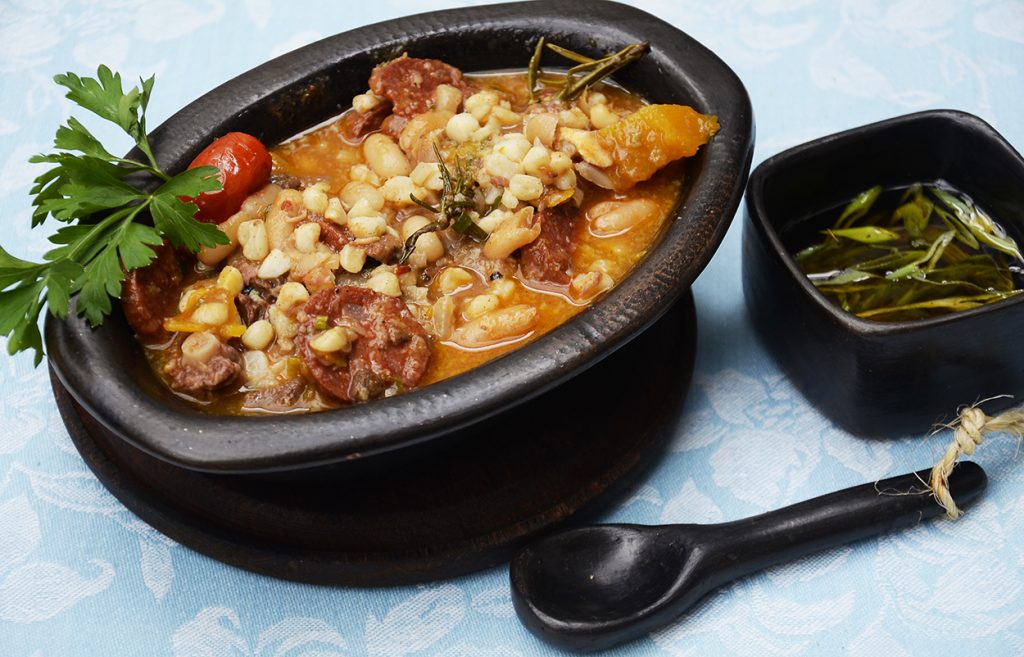The 25th of May is coming up and that means one thing, it’s time to eat Argentine locro. Wherever you live in the country, national holidays are occasions to prepare regional delicacies such as empanadas, lentil stew, asado and many more. However, locro is especially important on the national scene and not many people know quite how old it is, or how many different cultures from across the Americas have influenced the recipe.
Made with a base of corn (the sacred grain that is a major part of cuisine across the continent), squash (which brings sweetness and a creamy consistency) and beans (Argentina is one of the world’s top ten producers of beans), it is valued for its nutritional qualities all over the continent, from Colombia to Chile.
The name derives from Quechua: lukru or rukru, and every region has its own way of making it but they’re all a little spicy, contain cumin and are served hot in clay bowls to make sure it stays warm. It’s a dish that must be cooked slowly in a large pot and shared with family, friends and neighbours and it’s always served with a spicy sauce that raises spirits and delights taste buds.

What’s different about Argentine locro?
Today, Argentine locro is the product of many different legacies: the base may well be olla podrida, a Spanish stew featuring pig’s trotter’s, chorizo and bones which, when the colonizers arrived in the Americas with their cows (introducing beef and milk), chickens (eggs) wheat and onion, came to be mixed with indigenous ingredients.
The fusion resulted in a proliferation of flavours that eventually coalesced into the Argentine locro that has become one of the country’s iconic dishes as well as moving north to spread its popularity to neighbouring nations.
Which wines go best with locro?
The symbolically Argentine option is a Malbec. But the pairing will only work if the wine is fresh and fruity. One might also choose wines made from the Criolla grape, which are typically light with moderate freshness and easygoing aromas that work well with the potency of the locro.
If you’d prefer a white, then once again, tradition might have you leaning toward a simple, fresh Torrontés to cleanse the palate after each spoonful. But of course a Chardonnay that delivers aromas of fresh fruit, good volume and well-judged acidity might also provide a welcome counterpoint to the fatty meats in the dish. ¡Salud!
Recipe for Argentine locro
Serves 12
Large, 20 litre pot
- 300 g bacon
- 300 g pig’s trotters
- 500 g skirt steak
- 3 chorizos
- 500 g white corn
- 300 g butter beans
- 1 kg squash
- Vegetable stock with
bay leaves, sweet paprika and cumin
For the locro salsa
- Lard or corn oil
- 4 spring onions
- Sweet paprika
- Chilli flakes
Cooking Method
Soak the corn and beans separately the night before.
Prep: slice the meat, trotters, bacon and chorizo into thick chunks. Peel and dice the squash.
Drizzle the corn oil into the pot and fry the bacon on a high heat. When it starts to brown add the beef and trotters. Salt lightly and cook for 10 minutes. Add bay leaves, a teaspoon of cumin and three tsp of sweet paprika.
Boil the corn and beans in separate pots (best on a low heat so the grains don’t break down). Set aside.
Add the chunks of squash and stock and cook for another ten minutes. When the squash and beef are cooked, add the cooked corn and beans.
Simmer on a low heat, stirring regularly and adding stock if necessary, for two hours. When the squash has been absorbed by the stock and texture has taken on a creamy consistency, the locro is ready. It’s not a bad idea to skim the surface every once in a while.
Sala: Heat up the fat or generous dollop of oil and fry the spring onion for a few seconds before adding a large spoonful of chilli flakes and a smaller one of paprika. Stir with a wooden spoon and cook for 10 minutes.
Serve the locro, adding the salsa on top.



